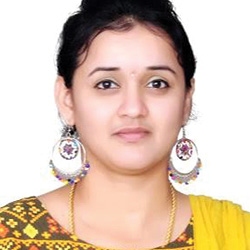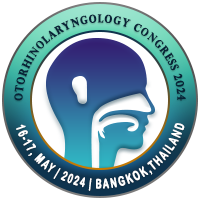
Lakshmi T K
Malla Reddy University, Hyderabad, IndiaTitle: Computer aided periodontal disease analysis using Artificial Intelligence
Abstract
Artificial Intelligence is a cutting edge technology used in all most all the sectors like education, banking, industries, e-trade, business, online marketing, navy, army and health care etc. where computer aided tools plays a vital role. Computer assisted automated systems are working smarter now and are used in decision making in health care because of the drastic increase in the technology. As data size and various diseases gets increasing day by day, AI based smart automated systems simulates human intelligence in managing the data and identifying the patterns behind the disease and helps health care professionals in detecting and diagnosing the diseases as well as acting as a supporting tool in identifying, predicting and classifying the disease thereby helping the clinicians as a supporting tool during decision making. The main focus of the current paper is dental related problem known as periodontal disease, that damages the soft tissues and bone supporting tooth which is a result of untreated plaque and tartar. Untreated periodontitis leads to lot of health complications and many researchers have already proved that there is a strong association between periodontal disease and other systemic diseases that affects the overall health. Therefore a systematic study is needed to predict the disease at early stage. Patients’ clinical and radiological findings such as periodontal pockets, gingivitis, black triangles, furcation, alveolar bone loss, tooth mobility, gingival index and other findings plays an important role in identifying the disease. Machine learning algorithms like Support vector machine, Naïve Bayes, random forest, decision trees, logistic regression and KNN algorithms are implemented to distinguish the patients having healthy gums from those having periodontitis. Similarly taking the digital dental radiographs, deep learning technologies like Convolutional neural networks, transfer learning can be implemented to distinguish patients’ suffering from periodontal disease to that of normal periodontia. Segmenting periodontal cysts of periodontal disease is another area where deep learning technologies place a key role. The segmentation algorithms like edge based segmentation, thresholding, watershed based segmentation, UNET, RESNET and many more are used in segmenting the area of interest in digital radiographs. Thus supervised, unsupervised algorithms and deep learning technologies of Artificial Intelligence are broadly used in the study and analysis of periodontal disease.
Biography
Prof. Lakshmi T K working as Assistant Professor in the Department of CSE, School of Engineering, Malla Reddy University, Hyderabad. She is having a rich teaching & research experience of total 15 years. She completed B.Tech in Computer science & Engineering in the year 2004, M.Tech in Bioinformatics and M.Tech in Computer science & Engineering from JNTUA, Anantapur and currently pursuing PhD in the School of Computer science & Engineering, VIT, Vellore. She is an M.Tech GOLD MEDALIST and has been topper in studies since schooling. She is having an excellent academic track record having distinctions throughout her academics. She is a recipient of many National & International awards like BEST TEACHER AWARD, YOUNG PROFESSOR OF THE YEAR AWARD, UTTHAMA ACHARYA AWARD, BEST PROFESSOR IN ENGINEERING AWARD & DR. SARVEPALLI RADHA KRISHNAN LIFE TIME ACHIEVEMENT AWARD. She has published many technical papers in National, International journals & conferences and participated and organized many workshops & FDPs. Her research papers contribution has been published and indexed in WOS, Scopus and Google Scholar indexed journals. She had 3 patents added to her credit. Her research areas of interests are Image Processing, Artificial Intelligence, Machine Learning and Deep learning in Health care, soft computing, and Drug design & discovery. Passion of research is on “Artificial Intelligence in Health Care”.

